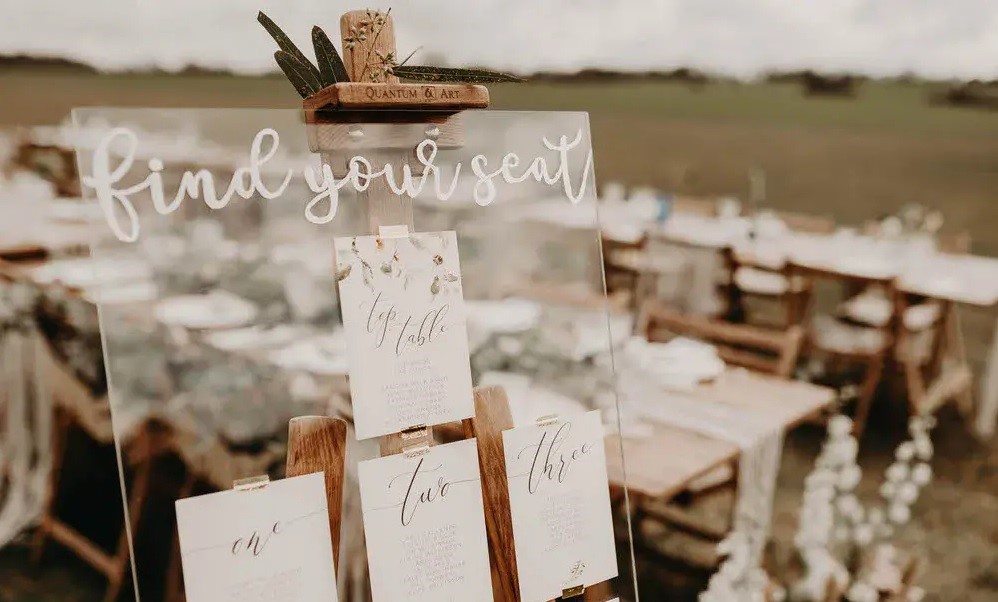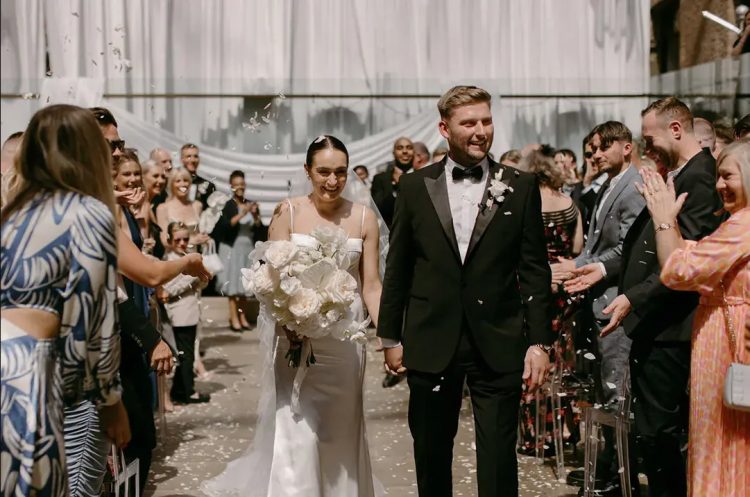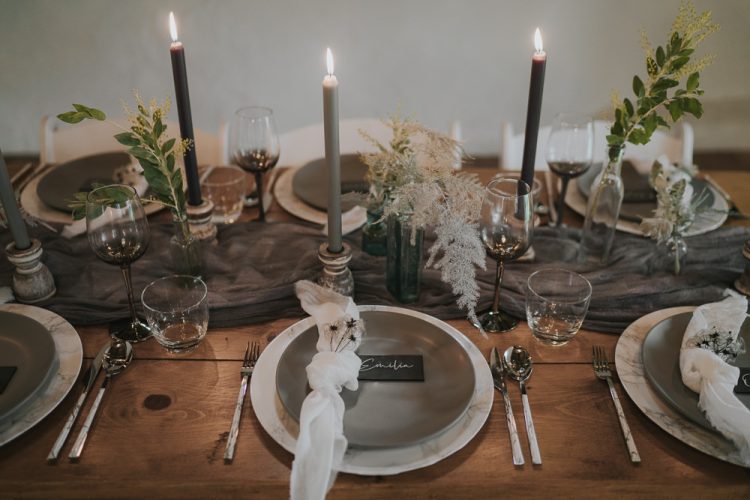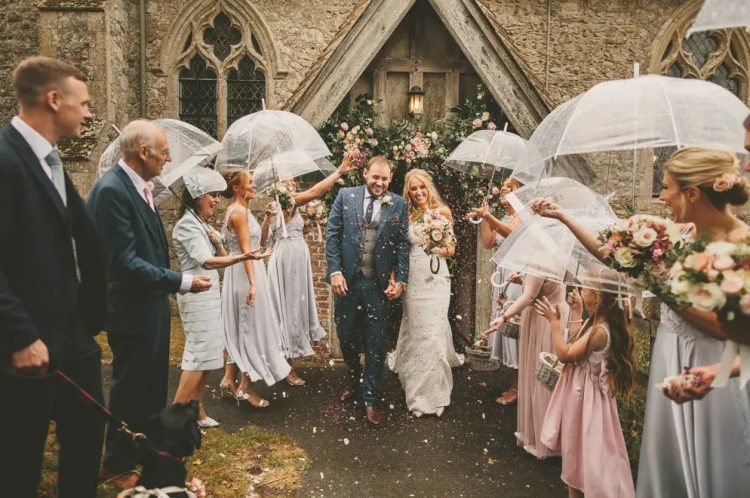The wedding seating chart is one of the most important parts of designing your reception. It helps keep seating simpler and makes it much easier for servers if you’re having plated dinners. Seating charts are also a great way to play around and mix different guests, or keep certain guests apart! But it can also be one of the most challenging parts of planning. With so many different considerations and variables to consider, it’s no wonder some people get overwhelmed. Luckily, with a little planning and research, the task shouldn’t be too difficult for you. To make things easier for you, we’ve put together this guide on creating the perfect wedding seating chart that matches your style and preferences, your reception layout, and the number of guests.
Follow these easy steps for how to create the perfect wedding seating chart
Gather Guest Information
Before you can create a seating chart, you’ll need to have a complete list of all of your guests, including their names, relation to the bride and groom, and any special requests or requirements they may have. It’s best to gather this information well in advance of the wedding so that you have plenty of time to plan your seating chart.
Choose Your Table Size
Based on the number of guests and the size of your reception venue, determine the number of tables you’ll need and the number of guests that can comfortably fit at each table. This will help you plan the layout of your reception and ensure that there is enough space for everyone. When planning your seating chart, consider using different table shapes such as round, square, and rectangular tables. This will add visual interest to your reception and create a more dynamic layout.
Decide Where To Put Vendors
Deciding where to place vendors at your wedding reception is an important step in the planning process. This will help you determine where to place your tables. When deciding where to put your vendors, consider the type of vendor and their function, as well as the layout of your reception space. For example, the caterer will need to be near the kitchen, while the DJ or band will need to be near the dance floor. It’s also important to think about the flow of traffic and to make sure that vendors don’t disrupt guests from being able to mingle. You’ll also need to consider space for safety in case of an emergency.
Create A Floor Plan
You’ll need to create a floor plan for your reception to help you visualize where each table will be placed and how guests will move around the room. Be sure to keep in mind the flow of traffic and the overall aesthetic of the room when creating your floor plan. Also, take into account the view from each table. Make sure that guests seated at tables in the back of the room have a clear view of the dance floor, stage, or other focal points of the reception.


Group Tables
Once you have a complete list of guests, your floor plan, and table size you’ll need to start creating table groups. Start by grouping guests based on their relationships with the bride and groom, such as family members, close friends, and distant relatives. Then, assign each group of guests to a specific table.
Assign Seats
Now that you have your floor plan and table groups, it’s time to assign specific seats to each guest. This is where you’ll need to consider the relationships and dynamics between guests, as well as any special requests or requirements. Be sure to seat guests who get along well together at the same table, and try to balance out the number of men and women at each table. If you want to mix it up, you could sit guests together who don’t know each other well to motivate them to make new friends and connections. You can do this by grouping guests with similar interests together so that they have something in common to talk about.
Determine Your Head Table
Consider creating a head table for the bride and groom, maid of honour, best man, and the key people in your wedding party. This table should be placed in a prominent location, such as at the front of the room, to ensure that it is easily visible to all guests.
Create A Separate VIP Seating Area
Consider creating a separate seating area for VIPs. Not everyone will fit on your head table, so this could act as an extension for other important guests that aren’t part of your bridal party. For example, siblings, grandparents, and close friends. This will ensure that they have a comfortable and special place to sit during the reception.
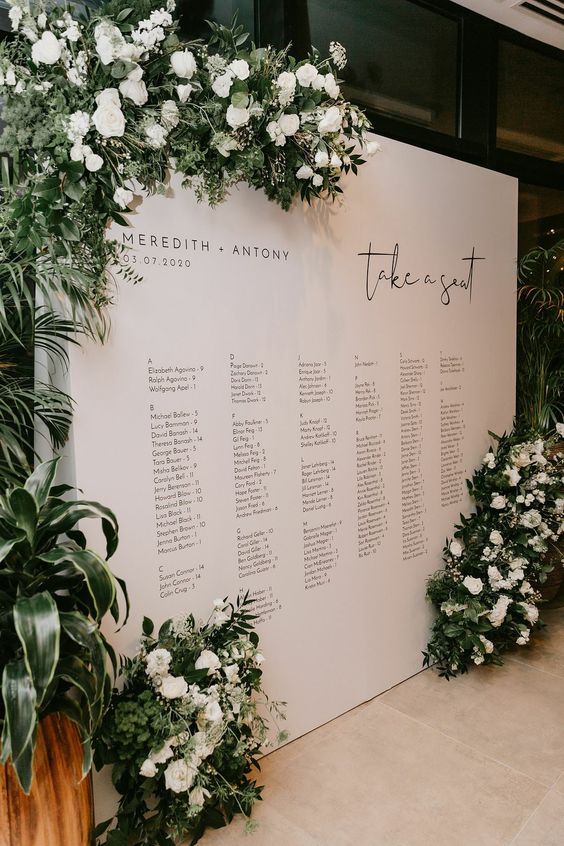

Consider Special Requests
As you create your wedding seating chart, be sure to take into account any special requests or requirements that your guests may have. For example, if a guest has mobility issues, you’ll want to make sure they’re seated at a table close to the dance floor or restroom. Similarly, if a guest is pregnant or has dietary restrictions, be sure to seat them at a table where they’ll have easy access to appropriate food options.
Review And Finalize
Once you’ve assigned seats to all of your guests, take a step back and review your seating chart as a whole. Make sure that all of your guests are seated in a way that makes sense and that everyone is comfortable. If necessary, make any final adjustments to the seating chart before printing it out or creating a digital version for your wedding planner and other vendors.
Communicate With Your Guests
Finally, make sure to communicate with your guests about their seating assignments. You can either let them know directly or you could create a gorgeous wedding seating chart for your reception venue entrance. Play around with your theme to make it as unique as you like. This way, they’ll know where they’re sitting and won’t be scrambling to find their table on the day of the wedding. Don’t forget to add table numbers to your tables so that your guests can easily find their assigned tables and vendors can identify guests. There are lots of different ways to display table numbers, from chic and contemporary to traditional and elegant.
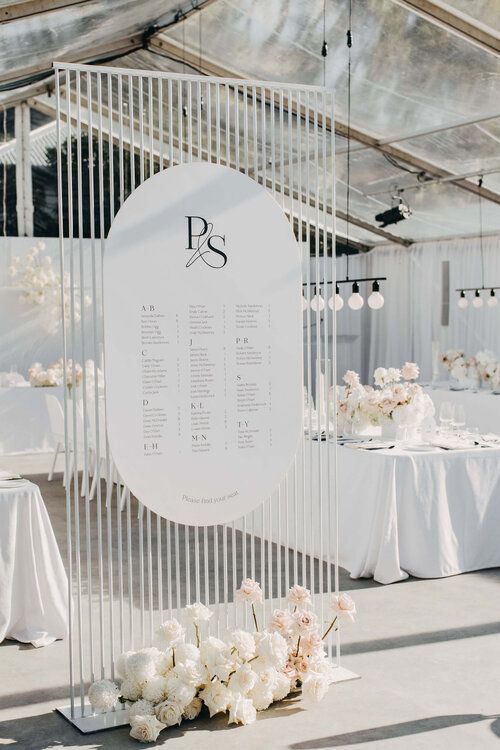

Discover how to create a perfect wedding seating chart for your reception. Head to WedBoard for more wedding planning tips. You’ll find inspiration and advice for all aspects of your big day including, 22 Delicious Brunch Wedding Food and Drinks Ideas, The Most Important Questions To Ask Your Wedding Venue, and 14 Trending Wedding Cake Ideas For 2023.
Featured image: Kelsie Low

